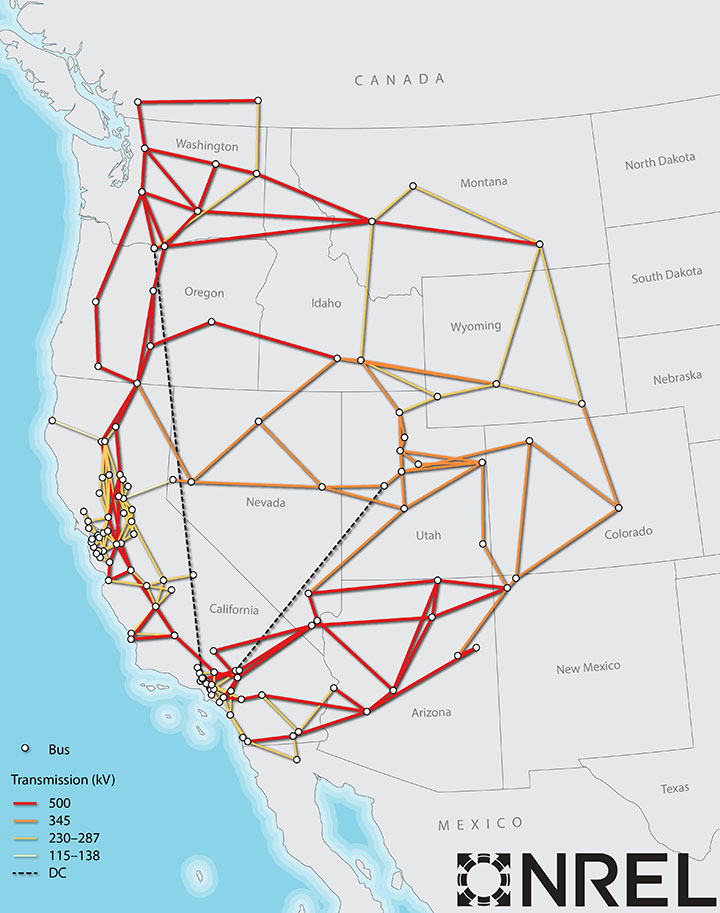Test Case Repository for High Renewable Study
NLR is building an electric grid test case repository to address the challenges of high renewables integration.
The repository contains open-source test cases, models, and datasets to help power system researchers and engineers evaluate their ideas for a renewable-rich future. The repository provides:
- One-on-one models and data for scheduling, power flow, and dynamic study
- Temporal and spatial time-series data of renewables and loads
- Modified test cases with high renewables
- Equivalent test cases in different simulation tools for cross-validation.
Test Cases
Explore these high renewable test cases.
Currently under development, this 9-bus test case represents a simple approximation of the Western System Coordinating Council to an equivalent system with nine buses and three generators. The Institute of Electrical and Electronics Engineers (IEEE) 9-bus system was used to create two equivalent standard test cases in PSCAD and General Electric’s Positive Sequence Load Flow (PSLF) for validating advanced controllers of renewables such as wind, PV, and battery power.
Use Cases
For advanced PV controller study:
Equivalent Test Bed in PSCAD and PSLF for Studying Advanced Power Systems Controller Performance, IEEE Power and Energy Society Innovative Smart Grid Technologies Conference (2019)
Currently under development, this test system is from General Electric’s PSLF dynamic simulation software demonstration systems. It is a 4-area system with 18 buses and 4 generators. The additional wind power plant and battery energy storage system model are integrated into Area 4.
Use Cases
For study of multi-timescale ancillary services deployment:
Investigating Power System Primary and Secondary Reserve Interaction under High Wind Power Penetration Using Frequency Response Model, Grid of the Future Symposium (2015)

The 240-bus Western Electricity Coordinating Council (WECC) model in Reduced Network Modeling of WECC as a Market Design Prototype is used as a starting point. On top of this model are these added features:
- Develop a 2018 base case that reflects the up-to-date generation resource mix, including installed photovoltaic and wind capacities
- Provide temporal and spatial time-series data of renewables and loads across the WECC for 1 year
- Add dynamic models that can capture the main dynamic characteristics of the WECC system, including system frequency response and main inter-area oscillation modes.
Downloads
The 240-bus reduced WECC system model was developed by NLR and used for the 2021 Institute of Electrical and Electronics Engineers North American SynchroPhasor Initiative Oscillation Source Location (OSL) Contest after modifications made by the OSL committee.
Cases for 2021 IEEE-NASPI OSL Contest
References
Developing a Reduced 240-Bus WECC Dynamic Model for Frequency Response Study of High Renewable Integration, 2020 IEEE Power Engineering Society Transmission and Distribution Conference and Exposition (2020)
Collaboration
Help us build our repository.
- Download and use our models in your own research. Please provide a citation to the original author.
- Email your comments and feedback on the models to us using the contact information below.
Share
Last Updated Dec. 7, 2025
